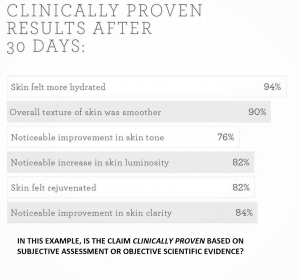Current regulations involving cosmetic products in Australia are mostly concentrating on two aspects: product safety and fair business practices.
With respect to safety, the Australian Government assesses the risks associated with cosmetic products and/or ingredients manufactured or imported into Australia to make sure that cosmetic products are safe for consumers, workers and the environment.
Under the Industrial Chemicals Act 2019, which is administered by the Australian Industrial Chemicals Introduction Scheme (AICIS), importers and manufacturers introducing industrial chemicals for commercial purposes need to register their business and regularly check the industrial chemicals database (Inventory) to make sure that they are meeting any regulatory obligation attached to the importation or manufacture of each chemical ingredient. Ingredients in cosmetic products, even those described as ‘natural’, are regulated as industrial chemicals.
With regards to fair business practices, the Australian Competition and Consumer Commission (ACCC) controls cosmetic product labelling, post-marketing product safety as well as advertising.
To comply with ACCC obligations:
- cosmetic products must be of an acceptable quality and any guarantees made or information provided about the product’s quality, safety, durability, performance characteristics and condition must be true. Claims must conform to the definition of ‘cosmetic’ product and must not be deceptive or misleading; they must be substantiated, with the exception of puffery ones.
- Ingredient listings must comply with the Trade Practices (Consumer Product Information Standards) (Cosmetics) Regulations 1991.
- If adverse events due to the products are confirmed, mandatory reporting and product recall processes must be followed.
Although the obligations are clear, the ACCC does not prescribe the steps or product tests to undertake to ensure products meet certain guarantees. The Australian cosmetic industry relies instead on best-practice guidelines.
It is apparent that the approach to cosmetic regulations in Australia is characterised by a more self-regulated style, which is quite different compared to the policy adopted by some large overseas markets such as Europe and USA. While such an approach does have its benefits, it also presents some challenges.
PROS
- Low start-up costs
Selling cosmetic products is achievable with a low upfront financial investment. Cosmetics amateurs can indeed easily turn their passion into a small business with very little funds initially. The lack of mandatory requirements means that setting up a cosmetic business can virtually be one of the most economical business ventures.
- Abundance of opportunities
From handmade soaps to highly sophisticated formulations, there are almost unlimited possibilities to create products to solicit or satisfy consumer demand. Facilitated by the lack of restrictions, the local cosmetic industry allows for creativity to run free and increase competition. In fact, in Australia any size business is given the chance to find their space in the market.
For new entrepreneurs and the local economy this certainly sounds all very positive, although the reality of self-regulation is such that it can often lead to confusion.
CONS
- Poor knowledge
It is not unusual to come across companies selling cosmetics in Australia who have never heard of AICS or the Inventory and do not know whether their products or ingredients or labelling or claims meet the basic Australian regulatory requirements. The ‘learn as you go’ model is risky in a highly competitive industry and may eventually lead to failure.
- Uncertainty
The lack of clarity around the ‘to do’ and ‘not to do’ or ‘can’ and ‘can’t do’ checklists can be quite difficult to navigate. Entrepreneurs may not have a true measure of the journey ahead in the absence of well structured guidance.
Additionally, insufficient regulations may have an impact on other aspects such as:
- consistency with regulations applicable to other industries, or consistency with regulations applicable in other countries;
- fairness towards local competitors that are more scrupulous or towards overseas competitors that are subject to more comprehensive regulations;
- consumer protection, when certain measures are not indeed mandatory though consumers take them for granted.
More discussions on the Australian cosmetic regulation dilemma are welcome and should involve all interested parties in order to understand if changes are needed.
https://www.tga.gov.au/cosmetics
https://formulabotanica.com/cosmetic-regulations-in-australia/




